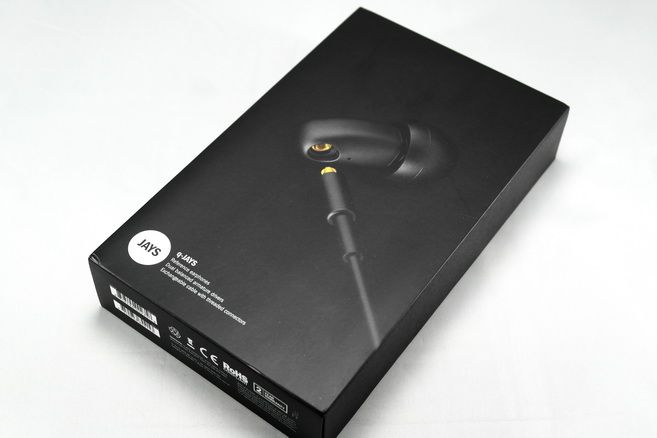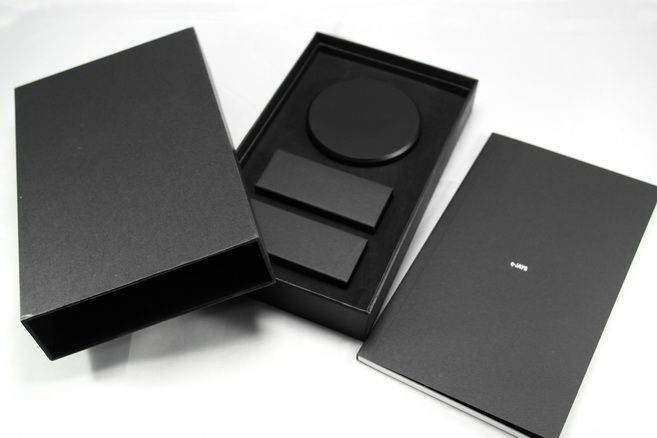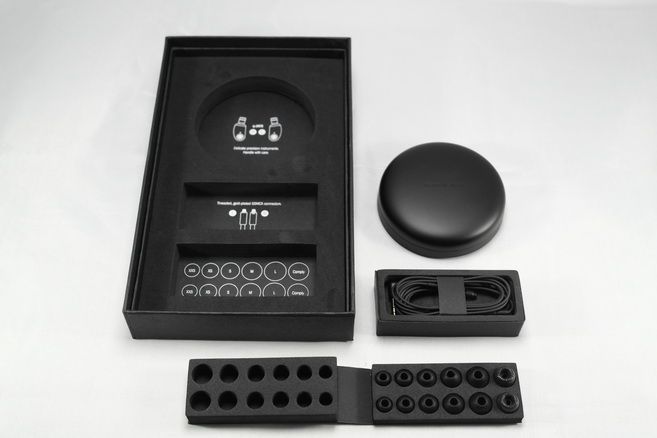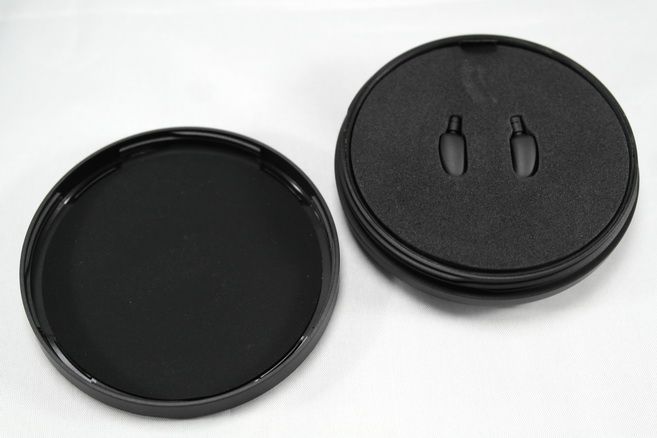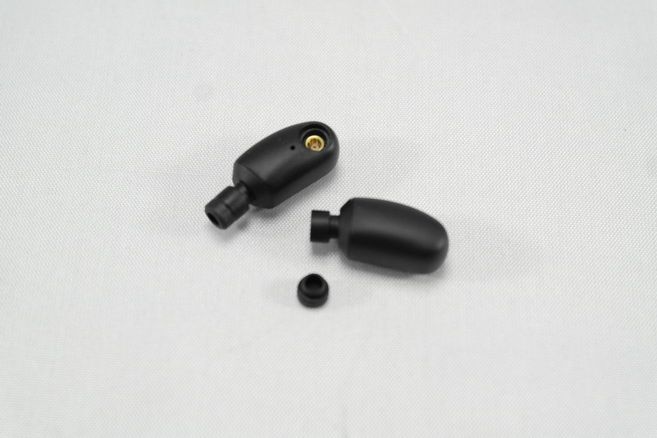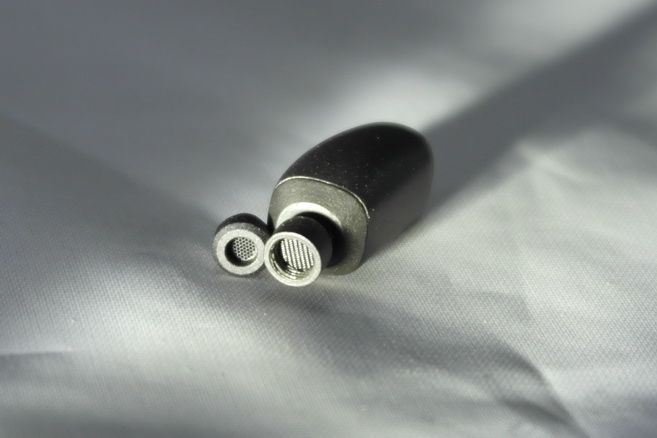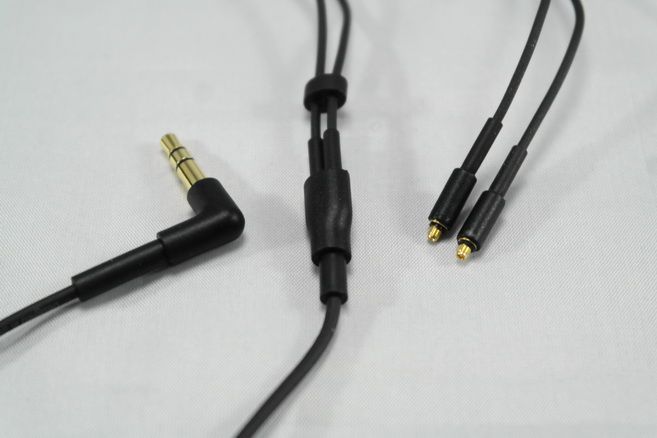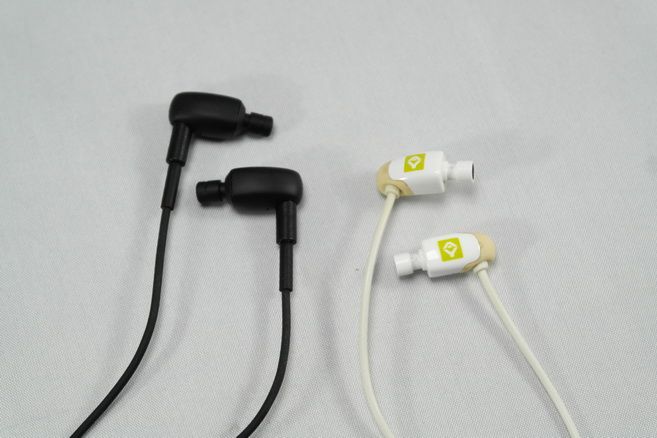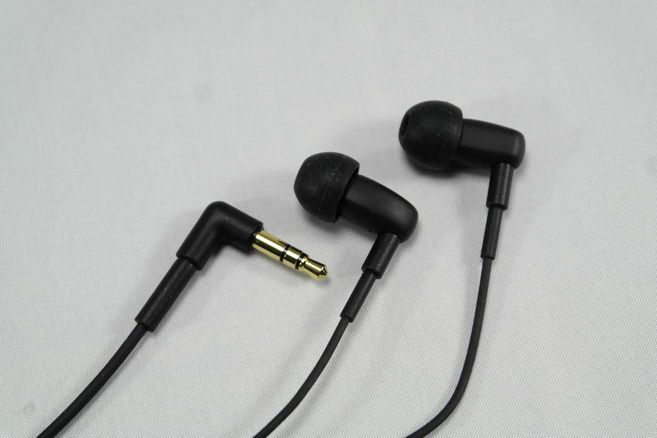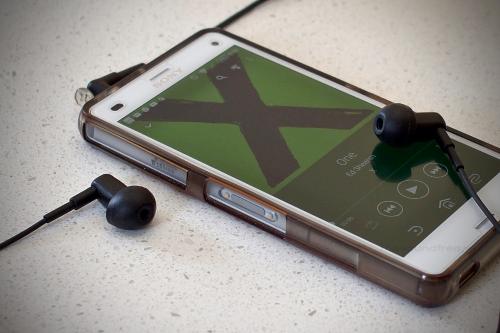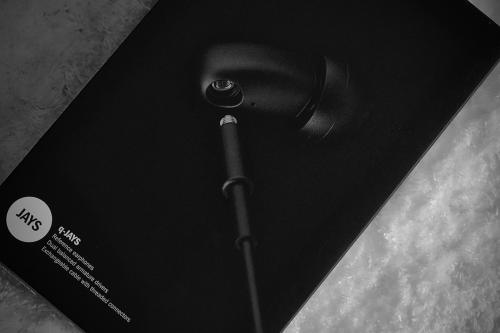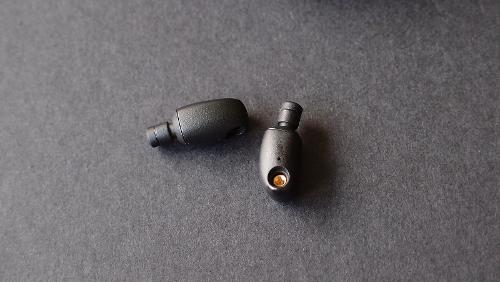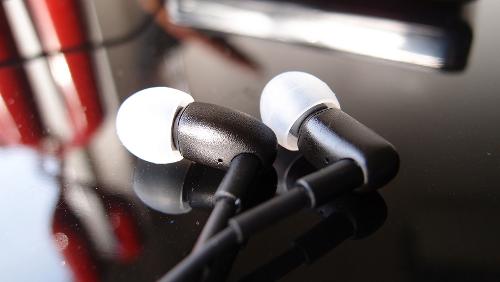Preamble:
Before I proceed to my actual review, let me start by saying a huge thanks to Jays for providing me with a sample of the q-JAYS (
https://www.jays.se/products/q-jays/) in exchange for my honest in-depth analysis.
I am in no way affiliated with the company and this review reflects my actual thoughts on the product - as usual.

Sweden, located in northern Europe, has got 53% forest area and a population of a little under 10 million people, but isn’t that small in terms of achievements. Besides the sympathetic royal family, Sweden’s automotive range should be familiar to most people, and so the country brought out solid, established and innovative brands like Saab and Volvo, but also Koenigsegg, a super- and hypercar manufacturer.
In my childhood, it was especially Sweden’s literature that grabbed my attention and focussed me, and besides “Petterson and Findus” or “The Wonderful Adventures of Nils” with Martin, his domestic goose, especially Astrid Lindgren’s tales of “Karlsson-on-the-Roof” or the tricks of “Emil of Lönneberga” among others of stories of hers fascinated me - and I still have got those books. Later, in my youth, I discovered a darker side of Sweden’s literature when I stumbled over Henning Mankell’s compelling thrillers.
The Nordic country’s musical achievements are quite remarkable as well and internationally known. Besides export hits like ABBA or Roxette, singers and groups like The Cardigans, Mando Diao, The Hives, Clawfinger, In Flames, Robyn, Lykke Li, Avicii or Nils Landgren are famous and internationally acting musicians (and are just a small part of Sweden’s great artists).
And with this little digression, I now come to introduce Jays, a Swedish headphone manufacturer whose story starts in the year 2006. Nowadays located in an old brewery in the centre of Stockholm, they started from the vision of creating a great musical experience for everybody, and that’s exactly how this Nordic company was founded. With the leading thought of creating products that are technically and sonically valuable and merging them with an elegant and appealing design plus providing the customer with a high-quality experience in every step as well as part from the unboxing to using the headphones, the q-JAYS from 2007, the world’s smallest dual-BA earphones which didn’t have replaceable cables back then, are probably the Swedish company’s best-known product.
After having been discontinued for some time, these in-ears with two Balanced Armature transducers per side with dedicated crossover in two-way design are now back again, with a slightly modified sound signature, replaceable cables and a total redesign.
Technical Specifications:
MSRP: $400 without remote control and microphone, $470 with (iOS, Windows or Android)
Sensitivity: 103 dB SPL @ 1 kHz
Impedance: 50 Ohms @ 1 kHz
Frequency response: 5 Hz – 20 kHz
Frequency response (-5 dB): 8 Hz – 16 kHz
Isolation: -40 dB @ 2 kHz
Connectors: custom threaded SSMCX by Jays
Delivery Content:
Jays promises a valuable experience right from the start, straight from the first encounter – and does definitely not disappoint in this regard. These in-ears are really well elaborated right down to the last details from the packaging to the cable.
The q-JAYS in-ears arrive in a black package that is surprisingly heavy and therefore already leaves a positive and high-quality impression. The front features a large picture of the in-ears and already shows one core feature of the q-JAYS’ 2
nd generation, which is the replaceable cable with threaded SSMCX connectors. The rear side shows an (uncompensated) frequency response chart as well as a very nice introduction to the in-ears and an actually negligible element that isn’t taken much care and notice of usually, but the case designers at Jays took heed of it. What I am talking about is the loop that is used for hanging the package on a hook in the stores, which is made of plastic and can be pulled out as well as slid back in whereupon it is flush integrated into the back. Even this little element shows that every single element and decision was made for reason and to deliver the best possible user experience. The upper side proudly shows “Designed in Sweden”.
The “next layer” or more specifically the actual box can be slid out to the sides and features the minimalistic modern black design that is a colour and characteristic which can be found on the entire concept of the q-JAYS. Designed after the idea and principle of a drawer, the actual box that contains the valuable goods can be slid out to the bottom. What can be seen then is a multi-lingual booklet (though the better fitting term would be “book” in this case) which is no regular manual, but contains many pictures, technical specifications, technical drawings, descriptions of all parts of the in-ears, information about the design and development process as well as the classical directions for use.
Taking that book(let) out, one will find three things: one carrying case as well as two small cardboard boxes. Underneath the carrying case, a graphic that show the side markers of the in-ear bodies can be seen (as there are no classical side markers on the in-ears nor on their cable once it is screwed in – the sides are identified by the in-ears’ shape). The carrying case itself contains solely the bare in-ear bodies without attached cables or ear-tips.
The upper of the two small cardboard boxes contains the replaceable cable and can be opened like a drawer (just like the one below it as well). When that box is taken out, a graphic shows the cable with side labels beneath it, as the small grey line on the right earpiece’s cable (which is the only side marker) can’t be seen once the cables have been installed.
The last box then contains five pairs of differently sized silicone ear tips as well as one pair of Comply Foam Tips and shows a graphic of the size when it is taken out.
That minimalistic yet magical and fascinating unboxing experience is definitely among the best that I have experienced with over 80 of my in-ears and headphones and shows how precisely every single part of the q-JAYS was planned - chapeau.








Looks, Feels, Build Quality:
Once the cables are connected with the in-ear bodies, there are no classical side markers anymore, as the small grey strip on the right side of the cable disappears in the in-ear’s thread and the correct sides have to be detected by the shape of the in-ear bodies. This may sound a bit confusing and strange, but just remember that the flat side is supposed to be backward-facing – it’s just that easy.
The in-ears are really small and the black metal bodies with their matte, rugged finish are something quite special about the in-ears whose development and design process took over two years and whose production process takes around 40 hours: in the first step, the bodies are created by metal injection moulding. In the second step, the bodies are polished and then sandblasted in the third step to create that rugged surface. In the fourth step which is the final one, the bodies are sealed by using physical vapour deposition, where the black metal particles are bind with the bodies on a molecular level, which creates one of the toughest surface coatings.
The nozzles of the in-ears feature removable, threatened aluminium filters with 55 laser-cut, honeycomb-shaped holes within a diameter of just 2 millimetres.


The replaceable cable is quite special: instead of using common 2-pin or MMCX connectors, Jays back on small SSMCX connections with the reissue of the q-JAYS. They are even threaded, which I consider as a huge benefit over MMCX connectors which can suffer from use (as a result of the rotation) and dirt that can enter through the gap – but that is not the case with these threaded SSMCX connectors; very well done.
Despite the magnificent connectors, the cable is even the bigger highlight and honestly the best non-twisted in-ear cable I have ever seen: although it is small in profile and very lightweight, it is enormously flexible and seems pretty tough. The topic “strain relief” was also taken seriously and some nice rubber strain relief can be found on every transition as well as connector, and a chin slider is also present. As a nice little touch, a dark-grey “Designed in Sweden by JAYS” lettering can be found near the L-shaped 3.5 mm connector.


The included silicone tips are of high quality as well, thick-walled and very soft.
The protective carrying case is commendably bolstered with rubber on the inside, lies ergonomically in one’s hand and has got a “Designed in Sweden” inscription.
What is offered here is finest, pure, high Swedish quality without any disadvantages, combined with an elegant design – aesthetic and technical as well as build quality don’t have to be a contradiction, as the sound paragraph will also show further below.


Comfort, Isolation:
The in-ears are tiny – not small, they are tiny. As a consequence, the bodies are almost invisible in the ears when they are worn, and the q-JAYS are just wonderfully easy to position in the ear canals and could be very well also worn by people with small ears and small ear canals. As the silicone tips are very soft, the q-JAYS sit very comfortably in one’s ears and as a result of it allow for long-term wearing comfort.
Wearing the cables both straight down or guided over the ears is both possible, but keep in mind that Jays recommends switching the sides for the latter, so that the flat side of the bodies are always backward-facing.
Microphonics, also known as “cable noise”, are only moderately present with the “classical” wearing style and disappear almost entirely when wearing the in-ears the “professional” way.
Noise isolation is on a very high level, although it is just a tiny bit lower than with completely closed in-ears.
Remote Control (iOS), Microphone:
The microphone cable comes in a packaging that features the same design as the one the in-ears arrive in.
It is just as flexible as the non-mic cable and also similarly designed, but has got a small in-line remote control on the right-hand side which has got a nice strain relief, three buttons and last but not least an integrated microphone.
Wearing the in-ears with the cables straight down, the microphone is located on the same level as my mouth, but changes its position to below my earlobe when the q-JAYS are worn with the cables around the ears – a slightly lower position would have been probably better, but the designers at Jays have rather decided to get a perfect position in one wearing style instead of just an “okay” position in both.
The three buttons for volume adjustment and playback control are easily tactile and have got a nice and pleasant pressure resistance.
The microphone has got really high speech intelligibility and voices are very crisp and clear on recordings as well as in phone calls.
As the remote control is located on the right side, it is also easier to identify the correct side when inserting the q-JAYS.



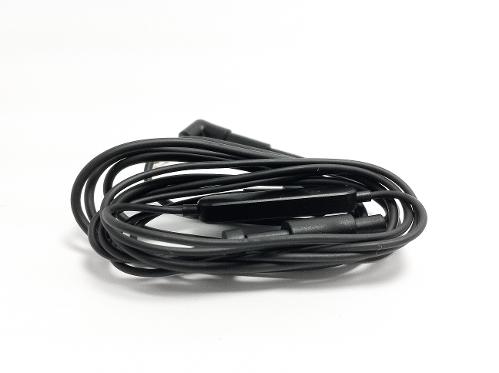



Sound:
I mainly used the q-JAYS with my iBasso DX90, as it has got an extremely low output impedance, has got an inaudible level of ground-hiss and is in general an analytically and precisely sounding digital audio player with a sound quality I personally really like.
Music files were mainly stored in FLAC and WAV format, but I also used a few MP3 files (320 kBps cbr). As usual, the music I used for testing covered many genres from Jazz over Pop, Metal and others, with different levels of speed and complexity.
On the computer, the low-impedance LH Labs Geek Out IEM 100 was my main DAC/Amp, with Foobar 2000 acting as playback software; I used SineGen and Arta as well.
Although I don’t believe in burn-in with Balanced Armature transducers, the in-ears were burnt in for 50 hours with noise and sine signals before listening (just in case).
The frequency response measurement graphs further below were not made with professional, calibrated equipment, but with the Vibro Labs Veritas in-ear measurement coupler. They should not be seen as absolute values, but rather as roughly visualised comparisons.
Tonality:
The tonal tuning of the q-JAYS is very grown-up and tends towards being balanced but without sounding boring. Who wants rather strongly sounded in-ears will most likely not be happy with these IEMs; gourmets however will.
The tonal tuning of these in-ears is really very well done and goes like this:
The bass together with the lower ground-tone is moderately accentuated in comparison to an almost strictly flat in-ear like the Etymotic ER-4S, but just enough so that the sound is not boring or sterile, though not really bassy yet – the sound is not really bassy, but also not neutral anymore. Generally, that is audible the most in the area of the mid-bass and lower ground-tone.
The lows are very even, and there is no real roll-off in the sub-bass even below 30 Hz.
The in-ear’s mids are tonally perfect, that’s all I can say here. Voices are free of any coloration and spot-on; the tuning in this area was done with a lot of knowledge and care.
The lower treble, also known as presence area, is somewhat in the background, which makes the earphones excellent for long-term use and prevents the q-JAYS from a sometimes strenuous “in your face” character in this area which the Etymotic ER-4S has for example. With that, the in-ears can be used for many hours without getting tired. From about 4 kHz on, level starts increasing again and has even got a small peak at 8.6 kHz in my ears. Super highs above 10 kHz have yet got a good extension for a BA-based dual-driver and help for still enough subtle sparkle in that area.
The people at Jays have really given the q-JAYS a felicitous sound tuning – the lows are emphasised enough to not sound boring, yet shy enough to not sound too bassy. The midrange is tonally correct, neither over- nor under-present and not obtrusive. Treble is, regarding level, pretty much correct, though the presence area is somewhat in the background to guarantee for a good long-term usability without fatigue.
The tonality is very natural and realistic, although the treble can sometimes appear to be a very tiny bit artificial sounding – but that is criticism on a really high level (and applies even more to the Ultimate Ears Reference Monitors’ treble).
Resolution:
I have to admit that I was a bit sceptical before I listened to the earphones for the first time if the resolution was on-par with the price tag or whether the q-JAYS were just overpriced dual-driver in-ears – but luckily they were a pleasant surprise.
The overall resolution is on a high level and indeed does justice to the price tag. What the developers at Jays squeezed out of the Knowles TWFK in terms of details is quite remarkable and probably the most that can be got out these tiny drivers.
The mids are really detailed, natural and highly resolving, have got natural as well as vivid voices and high speech intelligibility even at low listening levels, which is a typical thing for in-ears with Balanced Armature transducers. The whole sound is highly authentic as well as natural and seems open and easy-going, which not many in-ears in that price range manage to achieve in my ears.
Treble is detailed as well and renders instruments very nicely separated from each other, with an accurate and clean differentiation.
The lows’ drivers ability of using its back-venting hole where the driver also uses the rear air in the housings as coupling volume for tonal tuning and gives also small drivers the capability of extending low and having an emphasis has been used by Jays. That method can be either made very unobtrusive and gentle, or less good and harmonic – the latter goes at the expense of precision. What I can say is that the q-JAYS’ back-venting is definitely of the better sort.
The lows are, typically for BA transducers, fast, precise, arid and in the case of the q-JAYS very detailed as well, even though the back-venting can be heard in direct comparison to a closed BA-bass driver, especially with many fast bass attacks where a closed BA-bass has a harder impact and faster decay, but the q-JAYS’ lows are still quick enough for BA in-ears and only cave in a tiny bit with fast music and handles it clearly better than the InEar SD-2 which has got a back-vented woofer as well, but seems a bit strained with fast music and quick bass strokes – the q-JAYS don’t.
At the same time, that technical tuning gives the Jays a better resolution while still maintaining a good bass speed and aridness, with a higher lows resolution than the SD-2 and audibly less strenuousness with fast music.
Spatial Presentation/Soundstage:
The felicitous soundstage of the q-JAYS does indeed contribute to the good authenticity of these in-ears.
Though it is not as spacious as the one generated by my custom-moulded Ultimate Ears Reference Monitors or the InEar StageDiver SD-2, the Jays’ soundstage is not far behind those and definitely belongs to the in-ears with better spatial presentation.
Regarding width, the q-JAYS are clearly above average and have got a nice and well-distinctive depth that has about 80% of the width. In my ears, the soundstage’s position is also a bit in front of my head, which is quite nice.
Instrument separation is very precise and single instruments as well as single sound elements or musicians and instruments are cleanly positioned and separated from each other in the imaginary room.
---------
In Comparison with other In-Ears:
In this section, I am going to compare the q-JAYS with other in-ears with Balanced Armature transducers in two-way, two-driver configuration. I’ll sort them by price from the lowest to the highest and will briefly describe each in-ear.

Apple DualDriver:
The small Apple DualDriver in-ears (~€70) are actually not that widespread for no real reason, as they offer a good sound for the price (which can be kept that low because of the sheer amount of produced quantity and the partly moderate build quality and the meagre delivery content without a real carrying case) and are also technically good, but with some weaknesses. They are sonically still on the more balanced, yet darker side (but a good sound requires a deep insertion with them). Sound is fairly spacious, but it somehow lacks coherency, wherefore I would personally go for single-BA in-ears in the price range below €150 because of the usually better coherence, although the Apple DualDrivers are higher resolving in most cases.
-
The q-JAYS have got a bit less bass and audibly more treble as well as the tonally more correct mids (which are a bit too dark on the Apples’ side).
That the q-JAYS use the same driver for the upper frequency can be heard (the Apple in-ears use a modified version of the TWFK with its tweeter unit but another woofer), as the Apple IEMs have got a treble resolution that comes close to the Jays’, though not quite as differentiated and refined. What the upper half of Apple’s driver does really good lacks its lower half – the mids and lows can’t keep up with the Jays’ and that’s quite striking when comparing both IEMs directly. The q-JAYS are much better resolving in the mids as well as lows and unveil clearly more details, plus they have got the drier impact and the faster decay, thus they sound punchier and crisper. In terms of soundstage and coherence, the Swede is also the winner, with a more precise instrument separation as well as soundstage reproduction and the more cohesive sound in general.

Thomann the t.bone EP-7:
The EP-7 (~€170) is an OEM version of the JTS IE-6 (~$300) and a dual-driver BA-earphone in two-way layout. Tonally, it goes a bit into the direction of a Westone W4R, with thick mid-bass as well as ground-tone and a smooth, laid-back treble presentation. The resolution is about on the level of the Shure SE425 (if not even a bit higher) and the in-ears have got a rather small, yet surprisingly precise soundstage that is even a bit better than the Shure’s.
-
Sonically, the EP-7 is much closer to being an on-stage musician’s monitor than a hi-fi earphone – it is just too much sounded to be enjoyable and has got a thick ground-tone with warm and muffled mids and a clearly under-present treble with even more recessed upper highs that are more recessed than it seems on the graph. Listening to music with the t.bone without the use of an equalizer shows either that one has got a very strange taste of tonality or very low tonal standards – however, the OEM version of the JTS IE-6 is easy to correct with an EQ and is technically even a bit better than the Shure SE425.
The Jays are much better suited for listening to music, that’s for sure. The q-JAYS are higher resolving; both in-ears are about on par in terms of bass speed and precision, however the Jays unveil more details in the area of the ground-tone and the audibly better mids, treble resolution and precision. Both in-ears have got a good spatial presentation, but the Jays span the even larger room with better and more precise instrument placement and separation. Layering and especially stage control are better with the Jays when fast and complex music is being played.

Shure SE425:
The SE425 (~€280) is a fairly neutral sounding in-ear that lays a greater focus and emphasis on the midrange, wherefore it is ideal for live recordings, intimate pieces as well as singer-songwriter material. I would say “typically for Shure in-ears”, it has unfortunately got a below-average treble extension with early rolling-off highs. The soundstage is fairly small, but has got a good instrument separation (at the given circumstances).
-
The SE425 wins in terms of neutrality, though it is more mid-centric and has got the obviously worse treble extension without any upper treble glare at all.
For its former price of about €230, I think the Shure is a good dual-driver, but for its current price of around €280, there are some better alternatives, and so it is not much surprising that the q-JAYS outclass the SE425 in terms of resolution. In the mids, treble as well as bass, the Swedish in-ears put out just more details, which can be heard pretty well. The Shure has got a closed woofer and as a result of this a quicker bass punch, but the Jays have got the more detailed lows and are not slow by any means, wherefore they are still audibly better in the bass department.
The Shure has got a very small soundstage; the Jays a more open one with the more precise instrument separation and as a consequence of the larger size better instrument placement.

InEar StageDiver SD-2:
The SD-2 (~€380) is the UIEM version of the LivePro 2 custom in-ears and uses two BA transducers in two-way configuration and a back-vented woofer. Its tonal signature is fairly balanced with a little more warmth and thickness than neutral and a smooth treble that has got a surprising extension for a BA-based dual-driver. Due to its back-vented woofer, lows don’t have the typical clinical character BA woofers often have, but are rather what would be considered as “natural” by many, with a softer impact. The in-ears’ striking strength is definitely their widely extending, three-dimensional soundstage that reminds me of some more expensive and custom in-ears, with a superb instrument separation, -placement, precision and a huge authenticity.
-
This is a fairer comparison as both in-ears share similarities in terms of pricing, technical level and sound. Both in-ears share some similarities regarding tonality, though the SD-2 has got the thicker midrange and is more in the background in the treble department.
Both in-ears’ resolution doesn’t differ much, although I would say the SD-2 is slightly better resolving in the upper mids, whereas the q-JAYS are a bit better in the treble, bass and the rest of the mids. The Jays’ back-venting for the woofer is done better, as the Swedes have the more arid impact, are quicker, more precise and maintain the better control with fast music (which is one reason why I don’t like the SD-2 with fast and complex music that much – with the q-JAYS however, fast music with many quick bass punches works out much better).
The SD-2’s soundstage is very holographic and has got a stunning layering. The Jays' is a bit less airy and spacious, though not that far behind.
In terms of authenticity and soundstage, I would say that the SD-2 is ahead (though with a quite small distance), but the q-JAYS are the winners regarding precision, resolution and control.

Conclusion:
Jays wanted to create a reference product, and I think they quite succeeded with the q-JAYS.
The consumer gets a valuable high-quality experience straight from the start, which already starts with the packaging and continues in a consistently black finish and also includes the in-ears. Every tiny thing is well considered and elaborated into the tiniest detail.
Besides their really small size, the second generation of the q-JAYS feature a valuable and sturdy build quality alongside with an appealing and elegant design. The premium bodies are PVD-coated plus sealed and not only feature threaded SSMCX connectors, but also by far the best non-twisted cable that I ever got my hands on, as it is small in diameter, but highly flexible and very durable.
Tonally, these in-ears are more on the balanced side, but without sounding sterile or boring. The whole sound is extremely transparent, coherent, highly resolving and precise. The imaginary soundstage these in-ears picture is really good as well. I think what Jays have done here is probably sonically the most that can be squeezed out of the tiny TWFK dual-driver in a tonally, visually and haptically exquisite product.
Is there also some criticism? Yes, however on a high level: desirable would be at least some small, stamped-in side-identification marks in the connectors of the cables, which would not really damage the seamless and fluent design at all. Sometimes, treble can be a tiny bit artificial, but that was it basically. Sure, one could also get some triple- as well as quad-driver in-ears for the price that would be probably sonically better in some areas, but I don’t know any >2-driver IEM in that price range that has got the same build quality and delivers that same stunning user experience which shows how well every tiny element was considered in the design and manufacturing process as the q-JAYS do.
All in all, I come to a very good concluding rating of 95 percentage points or 4.75 out of 5 stars.
Väldigt bra gjort, Jays!
(Very well done, Jays!)





